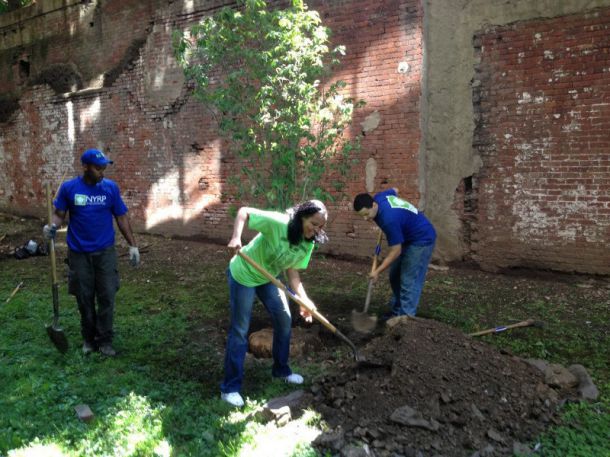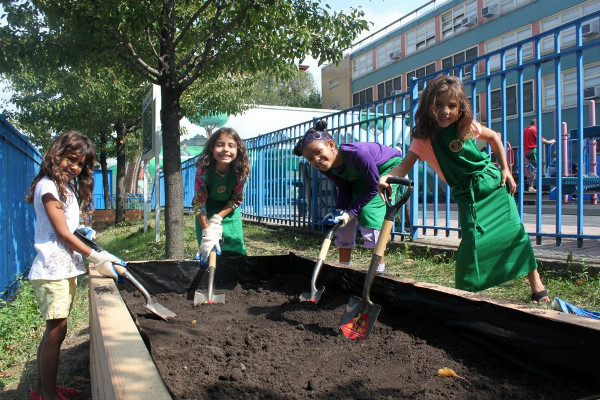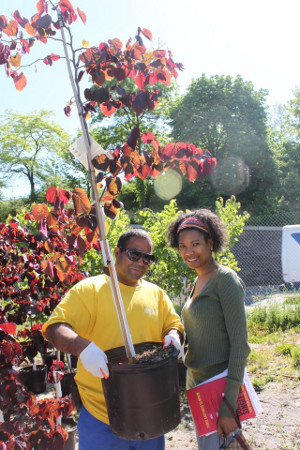
With a population of over 8 million people and an annual tourist influx of 50 million, New York City has its hands full keeping on top of litter and trash. In the most recent Trip Advisor survey, New York City ranked 28th out of 40 international cities in cleanliness, with Paris, London, Tokyo, Singapore, Dubai, and others being considered cleaner.Luckily for New York, its citizens famously love their city and are happy to offer a helping hand. There have been many privately funded and citizen-run programs such as The High Line and Green Guerillas which are aimed at keeping the city cleaner and greener. One particularly notable example is the New York Restoration Project (NYRP). Founded by international entertainer Bette Midler, the NYRP initially started as an effort to clean up a few of the neglected parks of the economically disadvantaged communities in Manhattan. Over time, the NYRP has become a significant force in cleaning and greening all five boroughs.
NYRP History
Bette Midler founded the New York Restoration Project in 1995 after becoming disgusted with the litter and general neglect she saw in some Manhattan neighborhoods. Midler stated she would do whatever needed to happen to clean up these areas “even if it meant picking up trash with my own two hands.” Midler has stayed true to her statement, personally working on a number of restoration projects in the city while overseeing countless others.Although the project started as a grassroots effort, Midler was joined by other like-minded non-profits including the Trust for Public Land. The organizations first came together when then-mayor Rudy Giuliani proposed the sale of 114 community gardens to commercial developers in order to make up for city budget shortcomings. Working together, the NYRP volunteers, the Trust for Public Land, and other organizations were able to raise the necessary funding to save the gardens.The community gardens were just the beginning of the organization’s commitment to the belief that clean, green neighborhoods are fundamental to quality of life and that every community in New York City deserves an oasis of natural beauty. The NYRP now offers events and other programs to support green living and sustainability throughout the five boroughs.
NYC Parks and Gardens
For more than two decades, the NYRP has been assisting the New York City Department of Parks and Recreation through restoration work and daily maintenance in several of the city’s public parks.Revitalizing NYC parks, is one of the organizations biggest concerns and their major projects have taken off in northern neighborhoods of Manhattan such as Washington Heights, Harlem, and Morningside Heights. These neighborhoods are home to some of New York City’s oldest parks, and the NYRP has contributed funding and volunteers to restore these parks to their historic beauty. In addition to beautifying these parks, the NYRP also owns and operates 52 community gardens across the city’s five boroughs. These gardens offer a space for people in the neighborhood to host BBQ’s , birthday parties, meet with friends and family, or just enjoy the sunshine. These gardens have a great deal of history in New York City, and the NYRP – as well as the Trust for Public Land have taken ownership of these plots to ensure they never become commercial space.
In addition to beautifying these parks, the NYRP also owns and operates 52 community gardens across the city’s five boroughs. These gardens offer a space for people in the neighborhood to host BBQ’s , birthday parties, meet with friends and family, or just enjoy the sunshine. These gardens have a great deal of history in New York City, and the NYRP – as well as the Trust for Public Land have taken ownership of these plots to ensure they never become commercial space.
How to get involved: Submit an application to become a community gardener. It is a great way to meet like-minded individuals and make friendships while giving back to the city. You can choose to manage your own garden, assist others, provide support during events and festivals, and more!
In the Gardens for the City program, schools and communities can submit an application for funding to help them turn a neglected public space in their neighborhood into a community garden. Each year several winners are selected from among the applicants and receive plants, flowers, and other materials to assist in creating a garden space.
How to get involved: Submit an application to revitalize your schoolyard and make it a greener place or apply to turn an abandoned space near you into a city garden.
Greening and Sustainability
 As more organizations and city officials have expressed an interest in sustainability and the city’s greening, NYRP has started other programs such as Million Trees NYC. Introduced in 2007 in partnership with the New York City Department of Parks & Recreation, Million Trees NYC planned to plant more than 1 million trees across the five boroughs in a ten year period. With the assistance of community members, volunteers, landowners or managers, and homeowners, the tree planting has been a huge success. As of this article’s writing, the organization has planted more than 660,000 trees with the remaining 340,000 to be planted across streets, parks and private residences. The good news? Continued funding means that graduates of the program will continue to rebuild urban forests after the 1 million mark is passed.
As more organizations and city officials have expressed an interest in sustainability and the city’s greening, NYRP has started other programs such as Million Trees NYC. Introduced in 2007 in partnership with the New York City Department of Parks & Recreation, Million Trees NYC planned to plant more than 1 million trees across the five boroughs in a ten year period. With the assistance of community members, volunteers, landowners or managers, and homeowners, the tree planting has been a huge success. As of this article’s writing, the organization has planted more than 660,000 trees with the remaining 340,000 to be planted across streets, parks and private residences. The good news? Continued funding means that graduates of the program will continue to rebuild urban forests after the 1 million mark is passed.
How to get involved: You can be part of this cool project by submitting an application for a free tree if you live in an area of the city where you have your own yard. The NYRP lists when and where it will be giving out free trees – check out the website to see where your tree is waiting for you.
In addition to creating and sustaining more green spaces, there are other creative ways to get involved in restoring New York City to beauty. One example is Bag Snagging, the clearing of plastic bags and other junk out of the branches of trees and bushes using a “bag snagger.” What is a bag snagger? It’s a cool telescoping device that allows you to grab things up to 40 feet away.The initiatives of the NYRP, together with the help of civilian volunteers, has taken what started as Bette Midler’s vision for her hometown and turn it into a driving force to change New York City’s approach to a green environment and sustainability. Luckily for New York, civilians are happy to do their part to keep their city clean, which keeps the city unique among international cities and gives hope for a cleaner future.

